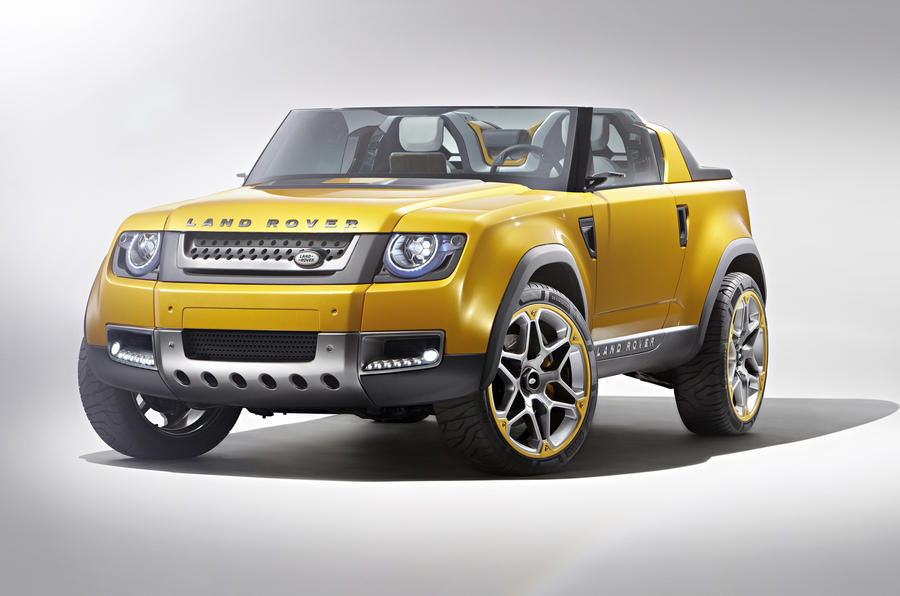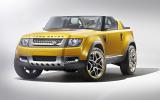Land Rover has revealed a second, ‘cool’ version of its DC100 Defender replacement concept at the Frankfurt motor show.
This second concept is aimed at demonstrating the image and design flexibility that it intends to build into the new model, which is due in 2015.
Dubbed DC100 Sport, the yellow-painted supporting concept is a sporty, open-topped speedster-style vehicle with cut-down screens and a twin-humped fastback tonneau to shroud its rear seats and payload area. Like its fixed-head twin, it rolls on 22in alloy wheels and ultra-low-profile tyres.
The Sport has the same three-plus- three seating plan as the first DC100, a reference to the front seat layout of original Land Rovers. The Sport is at this week’s Frankfurt show, standing alongside the more mainstream ‘tool’ version of the DC100.
“We want to acknowledge the strong design of the original Land Rover without being harnessed to it,” says design boss Gerry McGovern. “Deciding how far you go in recognising the current car is one of the biggest challenges. Today’s Defender is a fantastic machine but it has many faults: it is hard to build, not very space efficient, the driving position is cramped, it’s not very comfortable for passengers, and so on. We have to replace it. Our task is to realise what makes it great and to come up with a modern design with the same attributes – the advantage of modern design and none of the drawbacks.”
However, the project is not being contemplated merely to recreate an icon. Land Rover sees this as an opportunity to sell the kind of ‘premium durability’ SUV that no one else is making – in the same way as it opened a brand-new niche for the Range Rover Evoque – in a world market for 2.3 million functional 4x4s.
The company’s target is to make the new Defender as versatile and easy to configure as current models. It has an eye on sales to industrial users, farmers and international bodies like the UN as well as ordinary customers. However, producing specialist army versions – once an important source of sales for Land Rover – may be attractive in future, says brand chief John Edwards, but it won’t be the early priority.
The plan is to launch the car in 2015, at volumes industry watchers estimate at about 50,000 units a year.
At Frankfurt, the DC100 provides an impressive showcase for Land Rover’s accumulating store of new technology. Power is by 2.0-litre petrol or diesel engines with both hybrid and plug-in capabilities, driving through an eight-speed gearbox. Intelligent stop-start is standard, along with latest-generation Terrain Response (probably with a new ‘auto’ function to reduce driver workload). The powertrain has a traditional transfer box to provide permanent four-wheel drive, but it incorporates a ‘driveline disconnect’ system that decouples the rear axle to save fuel when all-wheel drive isn’t needed.




























Add your comment